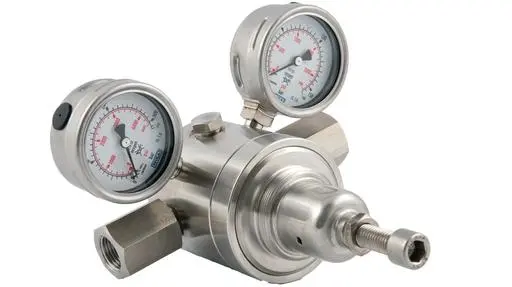Table of Contents
In today’s competitive industrial market zone, many different kinds of advanced low pressure controllers are available. These devices come in various sizes and dimensions to provide possibility for easy installation. This makes manufacturing so easy that very low-pressure controls can be handled with only a few touches on the screen. There are many smart controllers available nowadays. So let us discuss why you actually need them!
Low Pressure Controllers (0.8 Bar)
Basically, these devices offer the highest sensitivity when it comes to stabilizing extremely low pressures. The units like boilers, supply chain belts, and bottle-filling processes are run with the assistance of these valves.

Features & Applications:
The most widely used type of small pressure regulator is QKL-B1T. This valve allows for maintaining very minute values of pressure electronically. It has 3 output ranges defined as 2 bar, 4 bar, and 8 bar, respectively. If you install a 2-bar version in your system, you are able to maintain a very low amount of pressure. Furthermore, it makes it possible to attain an ultra-high resolution ranging up to 0.0005 bar, utmost stability, and swift response. The broadest application of low-pressure regulators is in the microfluid, dosage, and dispensing industries.
Now coming to the other type! It’s QKL-B3 which is the revised version of the 8-bar low pressure regulator. Due to the intense flow in particular directions as set by the programmer, it is possible to attain stability even in different variants of the environment with this device. If we talk about the accuracy, it is super excellent, ranging from 0.1-0.25% microbars. The most wide applications where the QKL-B3 low-pressure regulator is employed include large closed tanks that are programmed with the semiconductor devices to operate smoothly.
Want To Know Why You Need a Low-Pressure Regulator?
If you think about whether I need a low-pressure controller, the answer is yes! The reason includes the benefits of the following types:
Air Pressure Ratio Regulator:
With this electronically operated device, you can swiftly manage pressure amplification up to 20 times, which is a plus on its own. Due to this amplification, the controller can be stabilized without any hurdle. Among the most preferred revisions include 2 bar and 8 bar, thereby providing the pressure control to the maximum range of 210 bar.
Volume Booster:
Most of the time, electronic controllers provide a comparatively low rate of flow. To cope with such a complicated situation, volume boosters are installed so that the air pressure can be attained up to higher values. Due to this, it becomes possible to use it as a blower.
Steam Pressure Regulators:
Steam controllers provide control over steam pressure via electronic media. This allows hassle-free air pressure testing in tire industries to verify the quality of tire manufacturing.
Back Pressure Regulator:
With this low-pressure controller, you can easily manage forward or reverse flow of pressure even if the force is negligible. Due to the high sensitivity and quick response time, industries nowadays prefer these low-flow electronic pressure regulators to manage multi-directional pressure control.
Also Read: How Much It Costs To Modify A Vehicle For Mobility

